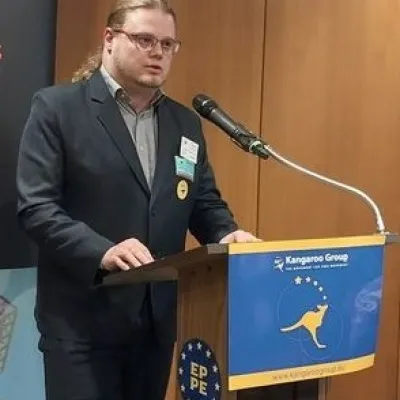The development of quantum computers threatens current encryption methods. A large-scale research project develops and implements solutions against quantum threats while helping Finnish companies in their preparedness.
Read the summary
- This project, involving Finnish universities and enterprises, focuses on developing quantum-safe encryption solutions to enhance Finland's preparedness and competitiveness.
- With partners such as Bittium and SSH Communications Security, the project works on solutions that will comply with future regulatory requirements for quantum-safe encryption technologies.
- The urgency of transitioning to quantum-safe solutions is emphasised due to the rapid development of quantum computers and the potential vulnerability of current encryption methods.
This summary is written by AI and checked by a human.
”Only by moving to quantum-safe solutions can we ensure the safe use of digital services, also in the future,” says the research team lead Visa Vallivaara.
Quantum computers are expected to break current encryption methods already in 2030’s. In practice, current cybersecurity solutions are therefore no longer able to protect, for example, sensitive personal data, health information, banking credentials and trade secrets. The situation is comparable to the Y2K system transition at the turn of the millennium, but is even broader and more complex, because all digital applications and devices require updating.
VTT, together with Finnish universities, enterprises and authorities, has launched the research project Beyond the Limits of Post-Quantum Cryptography (BLimPQC), with a purpose of solving cybersecurity challenges posed by development quantum computers.
“The project focuses on quantum-safe encryption solutions. We are developing encryption and identification systems as well as the key management needed for their implementation,” explains SSH Fellow Suvi Lampila from SSH.
The purpose behind the project is to enhance the competitiveness and level of preparedness of Finnish industrial players. Simultaneously, the project analyses how the tightening regulation affects different industries and what business opportunities it creates.
The Quantum Threat Is Accelerating
Bittium, together with other project partners, studies and develops quantum-safe encryption technology that meets upcoming regulatory requirements.
”Our goal is to enable authorised certification for our high-level cybersecurity products as soon as quantum safety becomes a requirement. The project enables us to offer the required quantum-safe cybersecurity solutions to our clients early, which improves our competitiveness,” says Tero Savolainen, the director responsible for Bittium’s cybersecurity products.
Quantum computers are developing rapidly at the moment. VTT uses Europe’s most efficient, 50-cubit quantum computer, which was launched in March 2025. IBM, in turn, has already launched one with a thousand cubits.
The schedule of the development is hard to predict precisely. However, threat actors can already collect data protected by traditional methods and break the encryption once they have a sufficiently powerful quantum computer in use.
Current digital services use public key encryption methods, in which the sender encrypts the message using the receiver’s public key, and the receiver then decrypts it with their own private key. Besides message encryption, this method is also used in digital signatures and authentications. At the moment, these algorithms are based on mathematical problems which are easy to solve with quantum computing.
Legislative preparations are ongoing against quantum threats around the world. The United States and the United Kingdom are going to ban the use of current public key encryption methods in 2035. In the US, federal systems must transition to quantum-safe encryption algorithms standardised by the National Institute of Standards and Technology (NIST) already in 2030. However, preparations for the challenge should start earlier, since the transition is not simple.
”The transition to quantum-safe encryption methods takes time, so the work must start immediately. By moving to cybersecurity of the quantum era, organisations also strengthen their own competitiveness,” Vallivaara highlights.
VTT is responsible for coordination as well as monitoring and preparing for regulatory changes. Aalto University monitors the development of quantum computing and studies the latest attacks leveraging quantum algorithms, as well as quantum key exchange. The University of Helsinki, for its part, analyses the implementations and restrictions of new quantum-safe algorithms. University of Oulu is leading the work to overcome limitations and explore new applications.
Information about the research project
BLimPQC (Beyond the Limits of Post-Quantum Cryptography) is a three-year research project launched in April 2025, with the objective of developing concrete solutions for ensuring the quantum safety of Finnish society. The research partners in the project are VTT, Aalto University, University of Helsinki and University of Oulu. The business partners are Bittium, SSH Communications Security, Xiphera, Jutel, Icareus and Ericsson. In addition, the steering group includes Traficom, Digital and population data services agency and the Finnish Defence Forces. The project is a part of Bittium’s Seamless and Secure Connectivity Ecosystem project in Business Finland’s “Veturi” programme. The total cost of the project is 6,3 million euros.
Additional information
Visa Vallivaara
Research team lead, VTT
+358 40 139 8326
[email protected]
Tero Savolainen, Vice President, Bittium
[email protected]
Suvi Lampila, SSH Fellow, SSH
[email protected]






